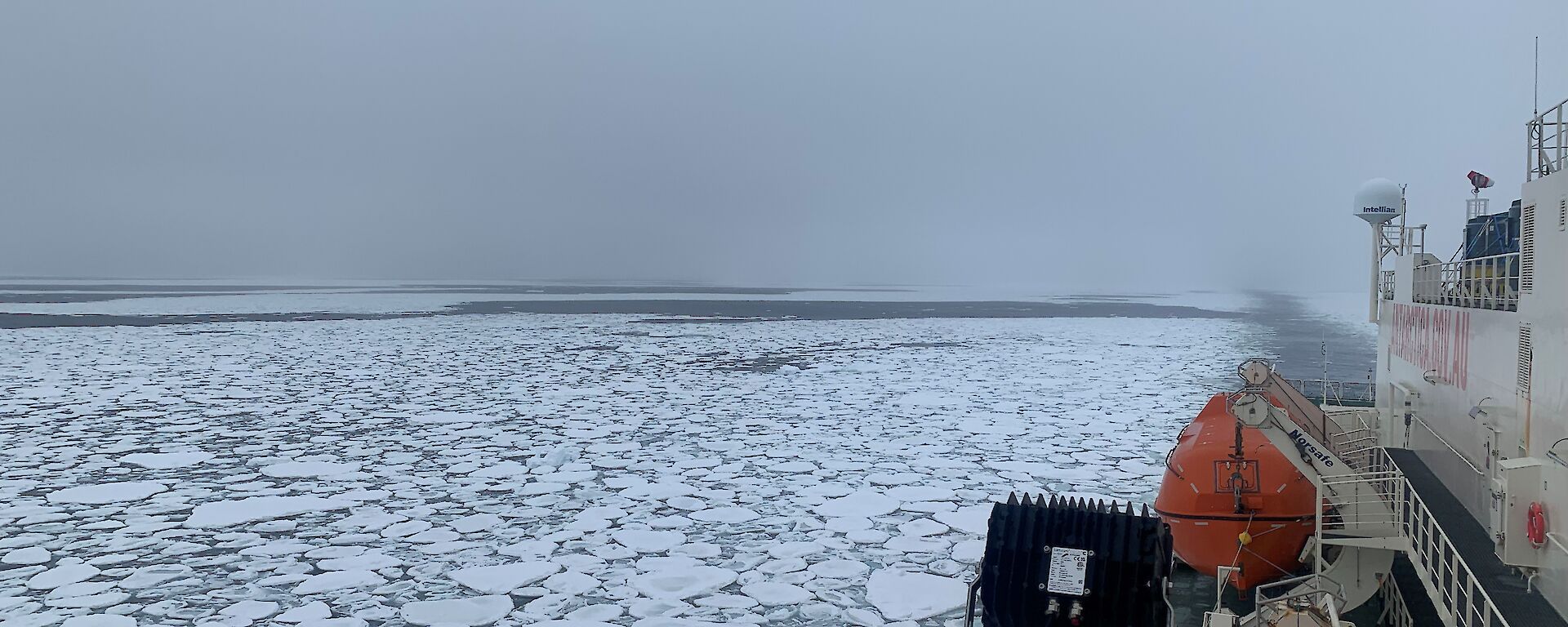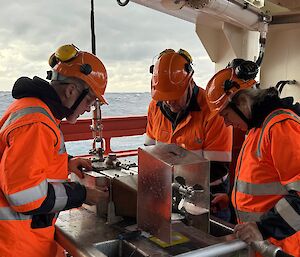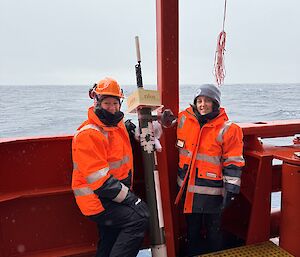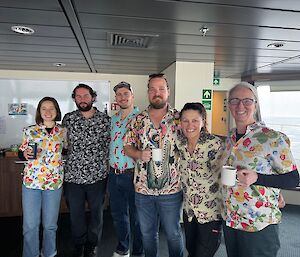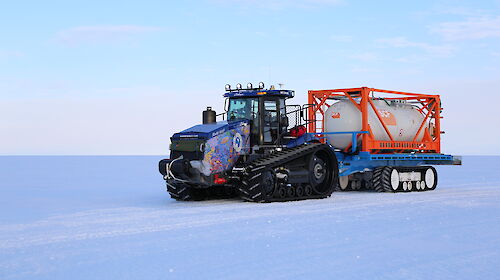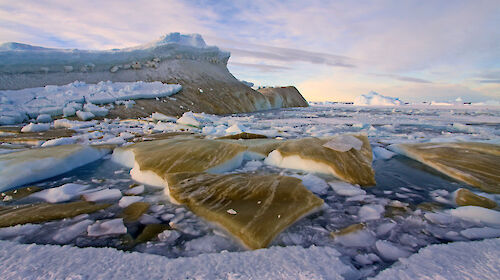Many of the scientists on board are busy with underway monitoring. The Continuous Plankton Recorder (CPR) was put overboard last Friday night, where it trawled for 450 nautical miles, collecting plankton on its silk filters. It was then hauled back in for a cartridge change and redeployed for another 450 nautical miles.
Other scientists are monitoring photosynthetic pigments and phytoplankton along the route using a fluorometer, an instrument that measures the intensity of fluorescence in seawater. The seawater is brought into the ship through a pipe called the uncontaminated seawater source.
It’s the first voyage for the pCO2 sensor – an instrument that estimates how much carbon dioxide is in the water – recently commissioned by the AAD in collaboration with CSIRO, IMOS (Integrated Marine Observing System) and AAPP (the Australian Antarctic Program Partnership) during sea trials.
“This will help us track how much carbon dioxide is being captured in the Southern Ocean through time,” V1 science coordinator, Dr Patricia Miloslavich said.
“Basically, the uncontaminated seawater source provides the instrument with an adequate seawater supply and that generates data that’s transmitted daily back to the Australian Antarctic Data Centre and to CSIRO for quality assessment and control.
“PCO2 is one of the essential ocean variables we supply to the Global Ocean Observing System (GOOS), which provides data for policy development and for climate change modelling and predictions.”
Scientists and crew have also deployed Argo floats, which form part of a global oceanographic monitoring system.
Time really is a fluid notion out here. We’ve set our clocks back twice now – an hour on Monday and another hour on Wednesday so we’re operating at UTC (Universal Time Coordinated, once known as Greenwich Mean Time) +8. After Casey, we’ll move back another hour every second day until we’re at UTC+6 for the Heard Island component of the voyage.
The Casey fly off is scheduled for Saturday or Sunday, when we’re about 80 nautical miles from the station. The Master will get the ship as close in as he can, depending on the sea ice, and then 400 kilos of cargo and 14 people will be flown by helicopter to the station – nine from the Traverse team, three working on ice runway preparation at Wilkins aerodrome, and the summer doctor and chef.
The social side of things is giving everyone plenty of options after-hours. There was a good turnout for the AFL Grand Final viewing in the theatrette last Saturday, and a showing of the obligatory 1982 Antarctic-themed horror/sci fi movie The Thing a few days later.
Next up – The Haunting of Hill House – in the run up to Halloween.

